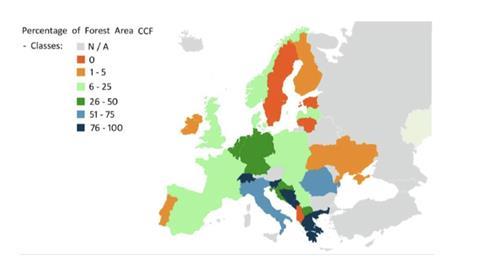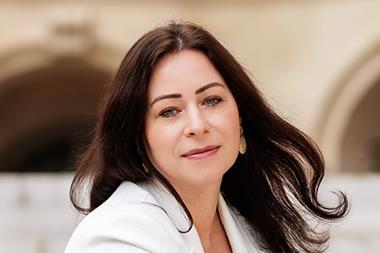Continuous cover forestry offers a promising alternative to traditional forest management, writes Paul McMahon
On 18 August, while many Europeans lounged on the beach, the EU Nature Restoration Law finally came into effect. It was the culmination of years of consultation, drafting, environmental lobbying, farmer pushback, and down-to-the-wire political brinkmanship.

The result - a unique piece of legislation that, if implemented, will help reverse alarming biodiversity loss in Europe, transforming how rural land is used.
What does this mean for institutional investors who are considering investing in timberland and natural capital in Europe?
Branching out: Rethinking forest management
Forests and other wooded land cover over 43.5% of the EU’s land space. The importance of forests expands far and wide, as they support the rich biodiversity of ecosystems and are essential for the health and wellbeing of all Europeans.
In the past, there was a tendency to divide forests between nature and production, with little overlap between the two categories.
Old growth forests, or forests on sensitive sites, were designated for conservation and managed purely for nature outcomes.
Other areas of commercial forestry – often monoculture plantations clear-felled and replanted as part of rotational systems – were seen as ‘wood factories’ and managed to maximise timber production.
The latter approach had some drawbacks, for biodiversity, carbon storage, water quality and local communities, but it was seen as a necessary sacrifice to produce predictable flows of timber for the economy.
The good news is there is a different way to think about forest management. Continuous cover forestry (CCF), also known as ‘close to nature’ forestry, is a promising alternative. CCF uses selective harvesting to extract singular trees, meaning it avoids clear-felling and maintains permanent forest cover.
This relies on natural regeneration to establish new trees, and, over time, a more complex forest structure evolves with a diverse mixture of species and age.
The goal is to optimise every hectare of forest for social, environmental, and economic outcomes, rather than compartmentalising nature and timber production.
The benefits of CCF
There is a growing body of research on the benefits of CCF. CCF has a positive impact on biodiversity in both boreal and temperate forests, as it maintains a more diverse forest structure.
The process mimics natural disturbance by selectively harvesting trees, preserving more deadwood and avoiding the destructive impacts of clear-felling on forest habitats.
Forests managed using CCF also have higher carbon stocks and avoid the loss of carbon that comes with clear-fell events. Converting to CCF management can therefore feasibly help the EU to deliver its carbon removal targets by 2030.
Another benefit is increasing resilience to pests, disease, and a changing climate. Monocultural plantations are especially exposed to these risks: for example, since 2018 Germany has lost half a million hectares of forest to the spruce bark beetle, which is linked to drought.
Crucially, we need more diverse, natural forests to adapt to changing environmental conditions.
Finally, there is a strong economic case for CCF. Research carried out by SLM Partners found that transforming Sitka spruce plantations to CCF management in Ireland and the UK would deliver an internal rate of return at least as high as conventional clear-fell management, with less risk.
There are similar findings from studies in Germany, Scandinavia, and Spain. Since 2018, SLM Partners has invested €30m into Irish forestry through its SLM Silva Fund, building up a portfolio of 1,900ha and implementing CCF management across most of these forests.
A technical assistance grant from the European Investment Bank is funding research on the biodiversity and carbon impacts of this approach. This fund has out-performed financially compared to benchmarks.
Expanding the roots of multi-functional forestry
CCF is used on an estimated 22-30% of Europe’s production forests. It first emerged in places such as Germany, Switzerland, Austria, and Slovenia where foresters grappled with the poor performance of plantation forests and widespread wind damage in the early and mid- 20th century.
It is expanding to other parts of Europe and is now supported by national forest policy in many countries.

The New EU Forest Strategy for 2030, released in 2021, champions this approach, referring to the need for ‘functionally diverse, mixed‐species forests … instead of monocultural plantations.’
This has been taken up by the EU Nature Restoration Law, which requires all member states to achieve a positive trend in a range of biodiversity indicators in forest ecosystems.
The indicators specified – uneven aged forests, deadwood, forest connectivity, abundance of forest birds and carbon stocks – are all consistent with CCF management.
Investors can play an important role in scaling up forest management systems that deliver for biodiversity and wider outcomes. Investing in forests is not enough; it matters how forests are managed.
Encouragingly, there is evidence that, in many contexts, CCF delivers the best long-term financial return, as well as social and environmental benefits. It is possible to transform commercial forests into benign habitats for nature and people. This is what a true natural capital strategy looks like.


















